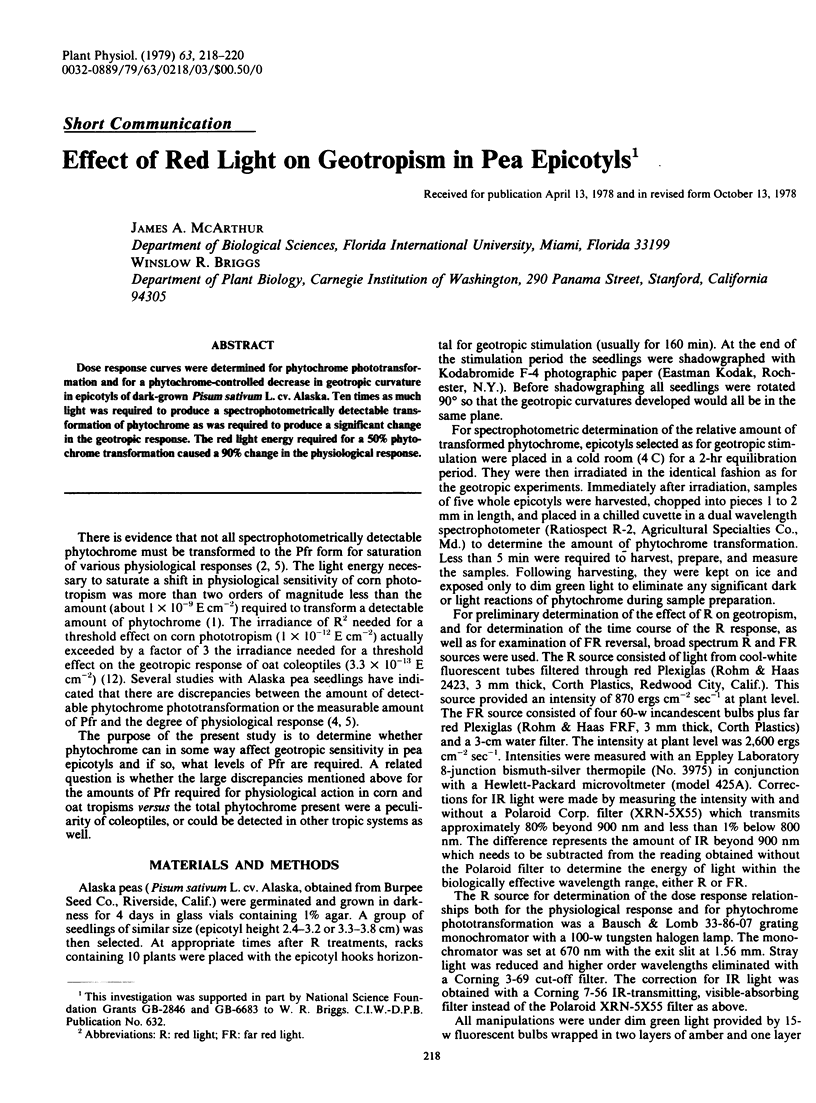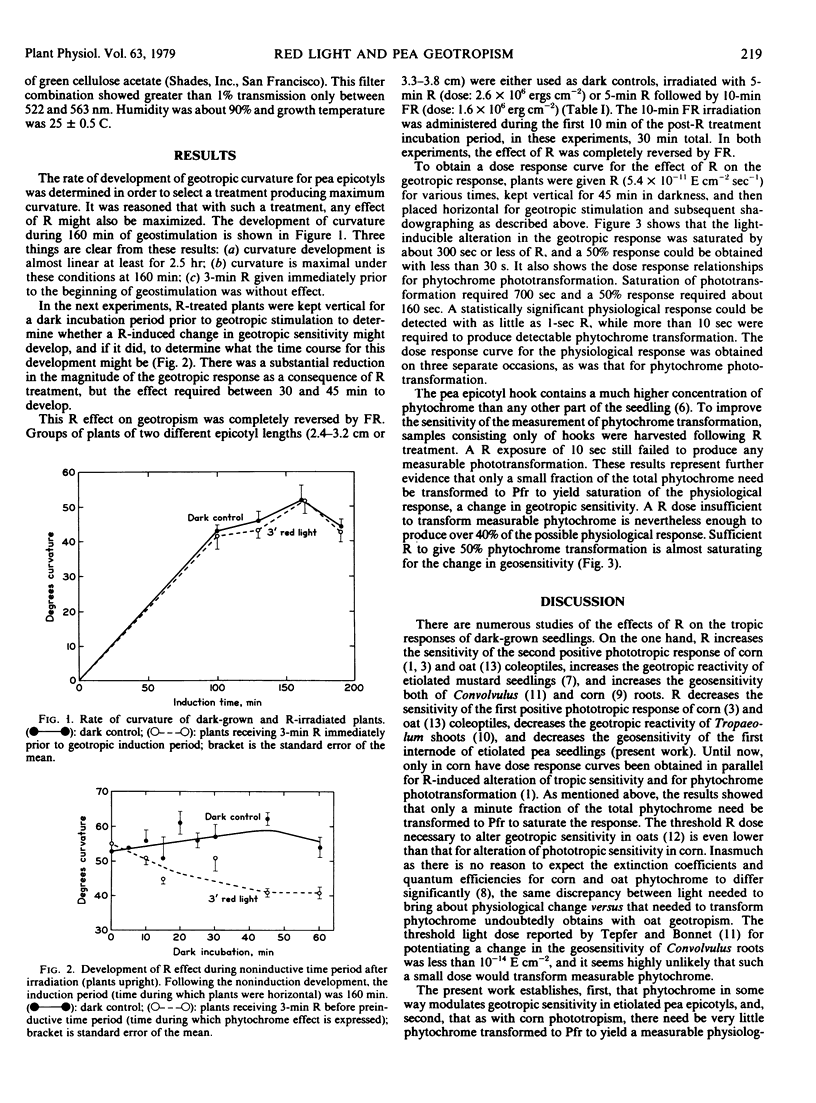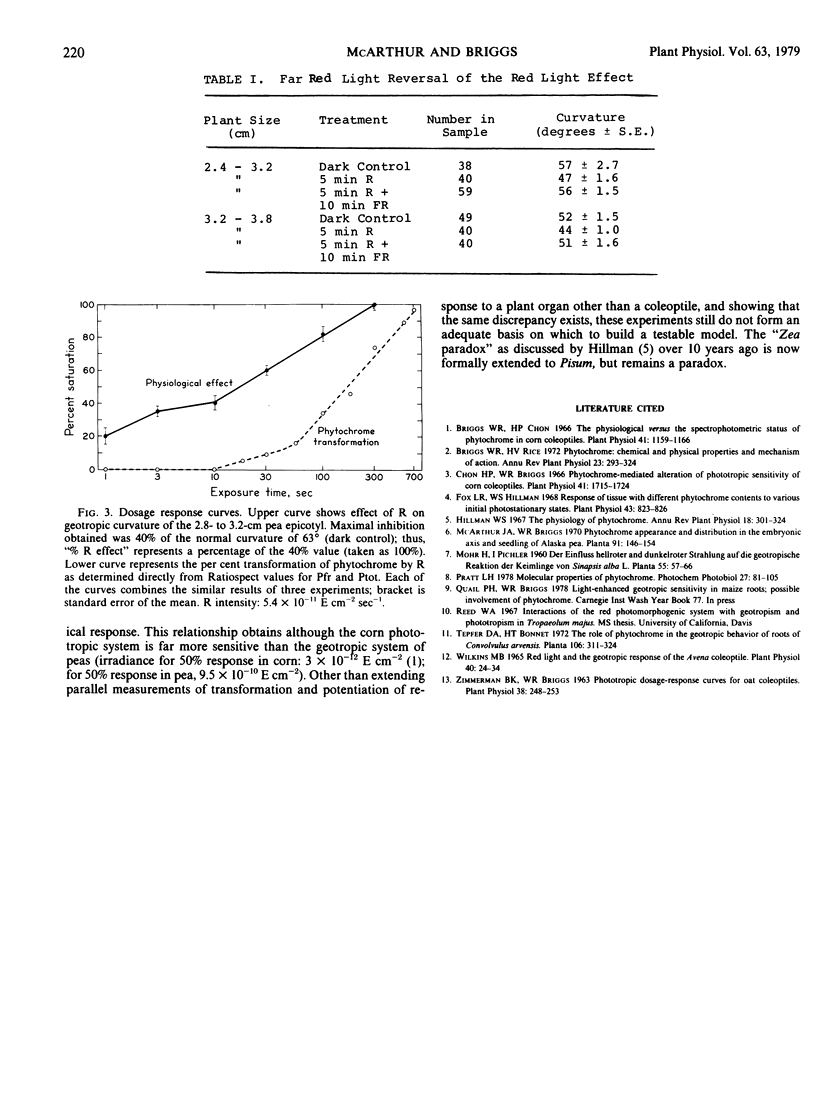Abstract
Dose response curves were determined for phytochrome phototransformation and for a phytochrome-controlled decrease in geotropic curvature in epicotyls of dark-grown Pisum sativum L. cv. Alaska. Ten times as much light was required to produce a spectrophotometrically detectable transformation of phytochrome as was required to produce a significant change in the geotropic response. The red light energy required for a 50% phytochrome transformation caused a 90% change in the physiological response.
Full text
PDF


Selected References
These references are in PubMed. This may not be the complete list of references from this article.
- Briggs W. R., Chon H. P. The physiological versus the spectrophotometric status of phytochrome in corn coleoptiles. Plant Physiol. 1966 Sep;41(7):1159–1166. doi: 10.1104/pp.41.7.1159. [DOI] [PMC free article] [PubMed] [Google Scholar]
- Chon H. P., Briggs W. R. Effect of red light on the phototropic sensitivity of corn coleoptiles. Plant Physiol. 1966 Dec;41(10):1715–1724. doi: 10.1104/pp.41.10.1715. [DOI] [PMC free article] [PubMed] [Google Scholar]
- Fox L. R., Hillman W. S. Response of tissue with different phytochrome contents to various initial photostationary States. Plant Physiol. 1968 May;43(5):823–826. doi: 10.1104/pp.43.5.823. [DOI] [PMC free article] [PubMed] [Google Scholar]
- Wilkins M. B. Red Light and the Geotropic Response of the Avena Coleoptile. Plant Physiol. 1965 Jan;40(1):24–34. doi: 10.1104/pp.40.1.24. [DOI] [PMC free article] [PubMed] [Google Scholar]
- Zimmerman B. K., Briggs W. R. Phototropic Dosage-Response Curves for Oat Coleoptiles. Plant Physiol. 1963 May;38(3):248–253. doi: 10.1104/pp.38.3.248. [DOI] [PMC free article] [PubMed] [Google Scholar]


